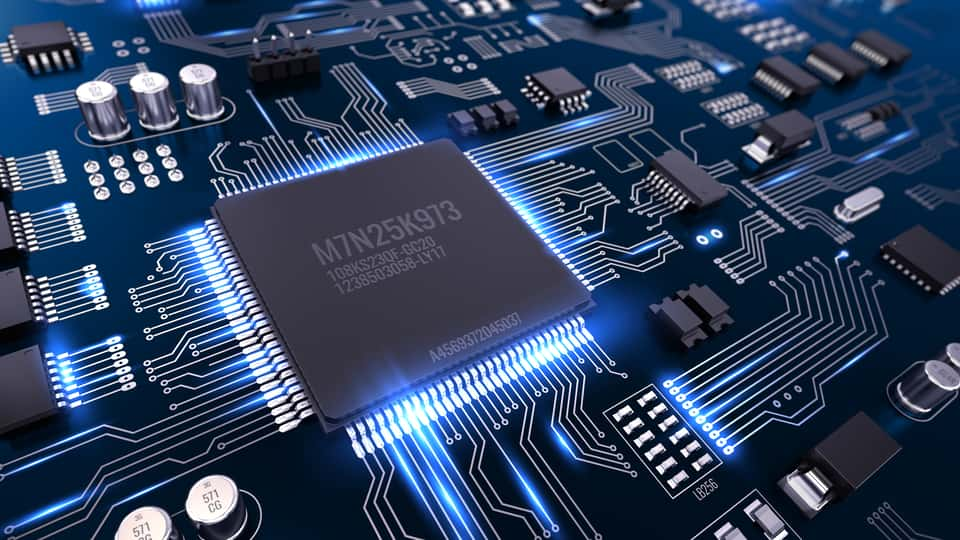It was just last week when I told you that Intel’s deal to sell its loss-making NAND flash memory unit was the beginning of a move toward greater consolidation in the semiconductor industry.
And sure enough, a few days later, another major deal was announced.
Advanced Micro Devices (AMD - Get Rating) & Xilinx (XLNX - Get Rating)
This time Advanced Micro Devices (AMD) agreed to buy rival chipmaker Xilinx (XLNX) in a $35 billion all-stock transaction.
XLNX shareholders will receive about 1.72 shares of AMD common stock per XLNX share. Current AMD shareholders will own 74% of the combined company, with XLNX shareholders owning the remaining 26%.
AMD pounced on XLNX at a point of weakness for XLNX, thanks to geopolitics. You see, China’s telecoms giant Huawei, which has been banned from selling its telecom equipment in the U.S., is a customer of XLNX. Before rumors of AMD’s interest began circulating, shares in XLNX were down 22% from their high point in the spring of 2019.
AMD is also smartly taking advantage of its own record stock valuation. The company has benefited from growth in data centers as well as among PCs and game consoles as consumers are forced to work, learn, and play from home during the ongoing pandemic. AMD designs chipsets for computers and gaming consoles, including the new Xbox Series X and PlayStation 5 that go on sale next month. Demand for gaming consoles has been robust this year.
This deal will be AMD’s largest acquisition ever. When completed, it will create a combined company with 13,000 engineers and more than $2.7 billion in annual research and development spending.
Most importantly, the deal will boost the company’s ambitions to become a data center powerhouse.
Xilinx CEO, Victor Peng, said the two companies’ combined portfolio would be able to serve customers from the “largest data center” to a multitude of Internet of Things (IoT) devices across the automotive, defense, communications, and industrial sectors. Data centers are where much of the computing power required for cloud computing and machine learning is concentrated.
The combination of the two companies will create another headache for struggling Intel, likely intensifying AMD’s battle with Intel for a bigger slice of the lucrative market for making chips used in data centers.
This is quite a turn in AMD’s luck.
As recently as five years ago, such a flip-flop in the fortunes of the two companies would have seemed nearly impossible. With a stock market valuation of less than $3 billion, AMD had fallen decisively behind its arch-rival, Intel. And it looked as if AMD could never hope to catch up.
At the time, Intel was broadening its lead and reach even more with the purchase of the specialized chipmaker Altera.
The specialized type of chips made by both Xilinx and Altera are known as FPGAs (field programmable gate arrays). These chips are becoming central to the expanding role of data centers. FPGAs act as accelerators to speed up the training of neural networks used for deep learning, and can also be reconfigured by customers, making them more adaptable as the demands of computing workloads change.
AMD management understands that chip companies without a full range of products to suit different data center needs are likely to fall behind in the long run, so the Xilinx deal appears to be perfectly timed.
Nvidia (NVDA - Get Rating)
Sure, AMD does have a long way to go to turn its vision into reality. Data center customers make up only 14% of Xilinx’s sales in the latest quarter, although growing at a 30% clip. And Xilinx is also only a small player in graphics processing units (GPUs), which Nvidia (NVDA) dominates.
But AMD is on the right path to success over the long-term. The potential is there to one day be able to mix and match FPGAs and CPUs on a single chip, optimizing performance for different workloads for individual customers.
Over the short term, AMD’s main benefit from the deal will come from diversification, which. The acquisition allows the company to extend its reach into the hot 5G base stations market as well as the automotive market, two sectors where Xilinx has gotten most of its sales.
All of that helps to explain why it’s Intel that is now struggling. AMD had also hit Intel hard with a well-regarded new generation of chips for PCs and servers even before this deal. And Intel’s shares have fallen 25% just since blind-siding Wall Street analysts in July with the news of major manufacturing delays.
It looks like AMD could be seen as a central force in the chip industry again. Perhaps more so than Intel in the not-to-distant future.
Want More Great Investing Ideas?
Top Dividend Stock to Own! Download Free Report Today
Buy These 3 High-Yield Dividend Stocks All Under $15
Buy and Hold These 3 Dividend Stocks Forever
AMD shares were trading at $81.15 per share on Wednesday afternoon, up $4.57 (+5.97%). Year-to-date, AMD has gained 76.95%, versus a 8.33% rise in the benchmark S&P 500 index during the same period.
About the Author: Tony Daltorio

Tony is a seasoned veteran of nearly all aspects of investing. From running his own advisory services to developing education materials to working with investors directly to help them achieve their long-term financial goals. More...
More Resources for the Stocks in this Article
| Ticker | POWR Rating | Industry Rank | Rank in Industry |
| AMD | Get Rating | Get Rating | Get Rating |
| XLNX | Get Rating | Get Rating | Get Rating |
| NVDA | Get Rating | Get Rating | Get Rating |
| INTC | Get Rating | Get Rating | Get Rating |






